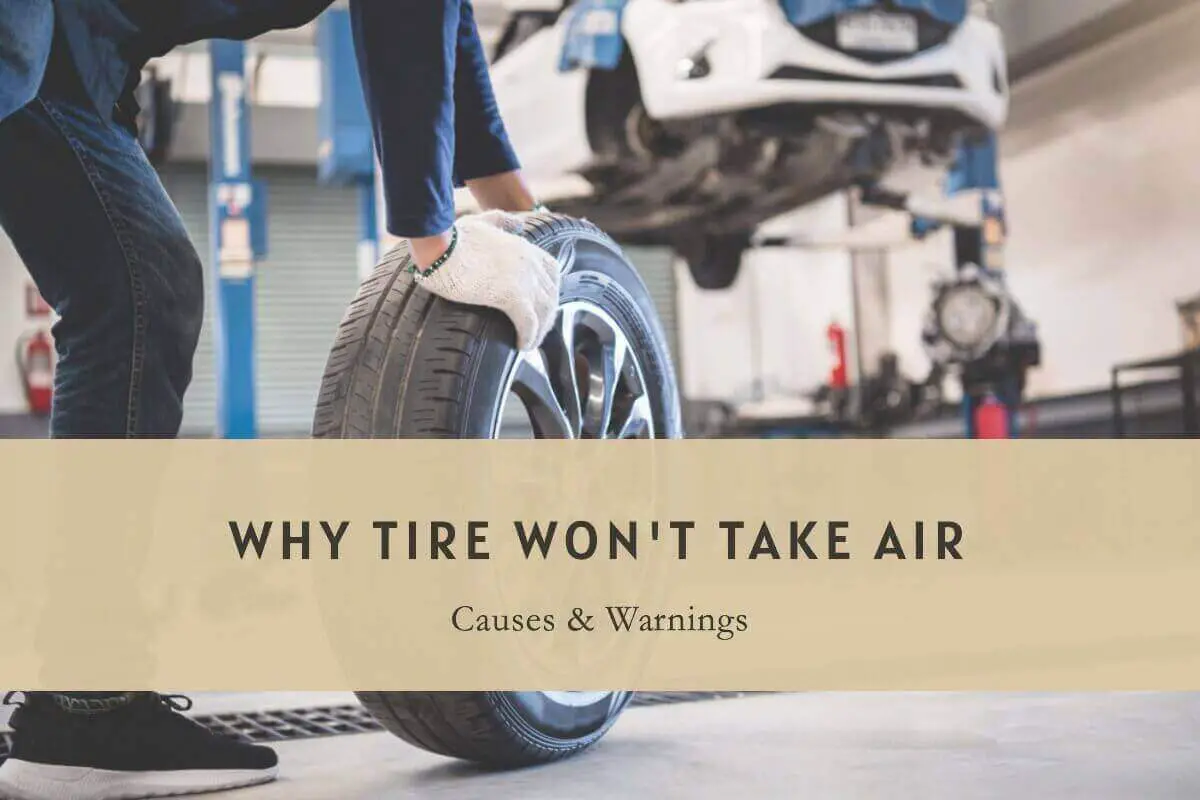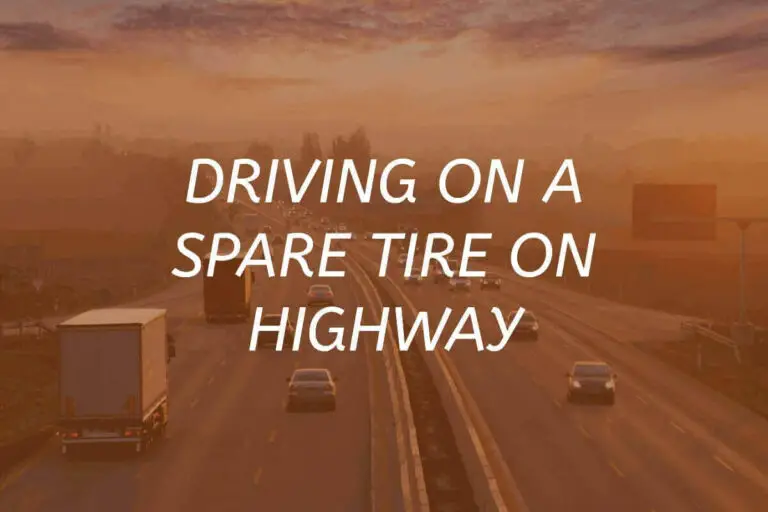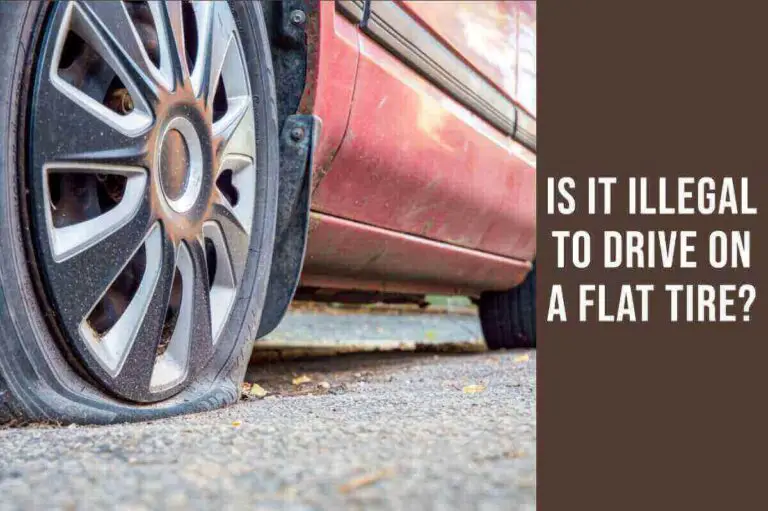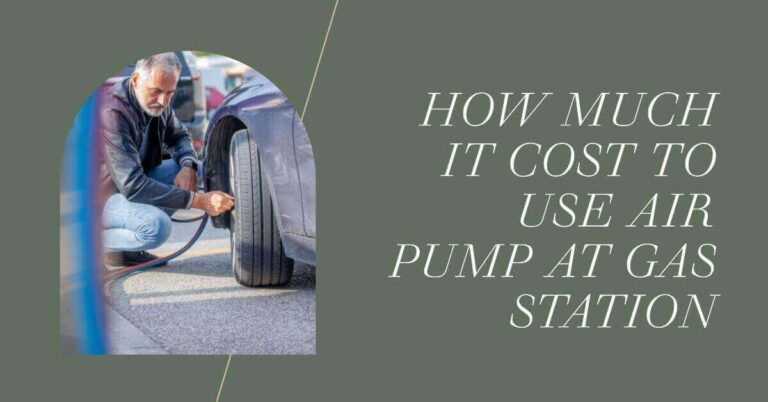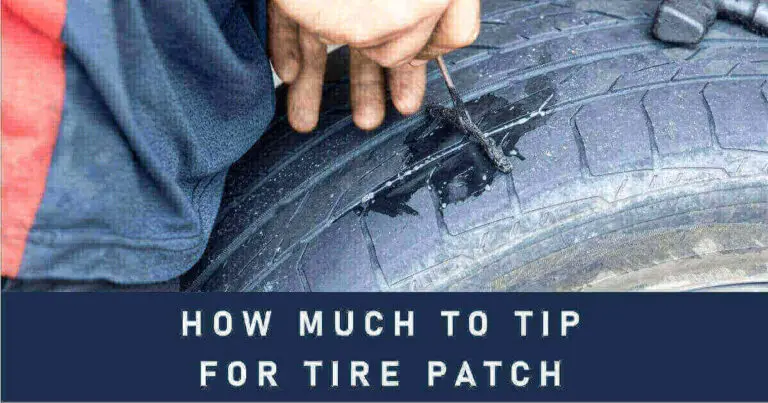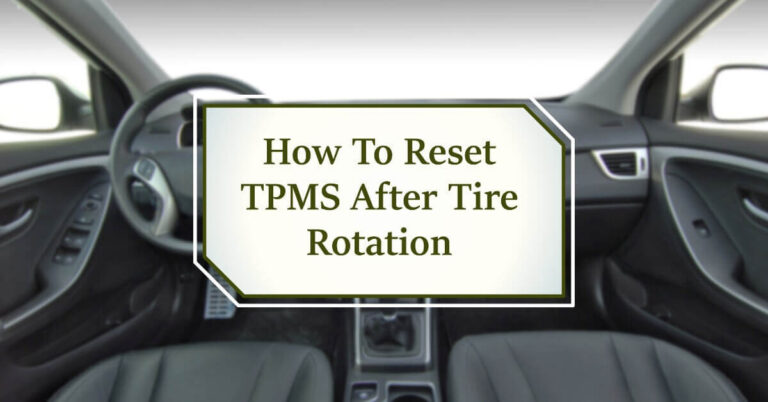Have you ever been in a situation where you’re trying to fill your tire with air, but it just won’t take it? It can be incredibly frustrating and irritating, especially if you have somewhere to be. Thankfully, there are some steps that you can take to try and rectify the issue.
We will discuss what to do if your tire won’t take air, so you can get back on the road and continue your day.
Tire Won’t Take Air
Having a flat tire is one of the most annoying and inconvenient things that can happen when you’re on the go. It’s even worse when your tire won’t take the air, leaving you feeling helpless and frustrated. We’ll look at some important factors you should know that can affect your tire’s ability to take the air.
1. Check For Punctures
In order to determine why a run flat tire won’t take air, you need to check for punctures. Punctures are caused by sharp objects such as nails, stones, and glass that penetrate the tire’s rubber resulting in a hole or tear. The most common signs of a puncture are a sudden change in tire pressure and an audible sound indicating something has pierced the tire’s surface.
You should inspect your tires for visible damage before adding air. If you find anything suspicious, then it’s time to remove the tire from the rim and look inside for foreign objects that can be easily removed with pliers or tweezers. It is also important to note that some punctures may not be visible due to their size or location, so it is always best practice to use an inner tube patch kit just in case.
2. Ensure Valve Core is Functioning
Ensuring that your valve core is functioning properly is an important step when diagnosing why your bike tire won’t take air. The valve core is a small part located at the end of the stem of a tire’s inner tube, which helps regulate and maintain the air inside the tire. If the valve core is not working correctly, it can prevent you from being able to add or maintain air pressure inside your tires.
To check if the valve core on your car’s tires is functioning correctly, ensure the stem cap is firmly in place. Then use a tire gauge to measure the PSI level and make sure it matches what is recommended for your vehicle type.
Unscrew the stem cap and examine if there has been any leakage around where it connects to the rim of your wheel or if there are any signs of corrosion on either part.
3. Look for Damage to Tire Sidewall
Tire maintenance is an important part of proper vehicle care. Not only can proper tire care help keep you safe on the road, but it can also save you money by prolonging the life of your tires. One issue with tires is when air simply won’t stay in them. While a few different things could cause this, one thing to look for is damage to the sidewall of your tire.
If there has been any damage done to a tire’s sidewall, it will usually prevent it from holding air properly. This damage could come in the form of cuts or scrapes from debris on the road or even small punctures made by nails or other sharp objects. In order to ensure that your tractor tire won’t take air due to damage, inspect its sidewalls closely and make sure they don’t have any signs of wear or tear.
4. Check for Wheel Imbalance
When a bike, car tire, or tractor won’t take air, it may result from an underlying issue such as wheel imbalance. Wheel imbalance occurs when one or more wheels on your vehicle are not balanced properly. It can cause several issues, including uneven tire wear and difficulty controlling the car while driving.
To check for wheel imbalance, you’ll need to begin lifting each wheel off the ground and spinning it to see if it wobbles or vibrates. If so, there’s likely an issue with your wheels that needs to be addressed. You can also use a special tool called a balancer to accurately measure any imbalances in your tires and wheels. By checking for an imbalance before attempting other repairs, you can save yourself time and money in the long run.
5. Consider Temperature and Age of Tire
If you’re a car owner, one of the most important maintenance tasks is checking your tire pressure. However, your tire may not take the air. If this is the case for you, consider the temperature and age of your tires before troubleshooting any further.
When temperatures drop below freezing in colder months, “cold leaks” can occur due to air molecules inside the tire contracting. It can cause a decrease in PSI which makes it seem like a leak has occurred when there’s none present.
Alternatively, suppose temperatures are above freezing but still cold enough to make your fingers stiffen up while you’re filling up your tires. In that case, those same molecules may be expanding faster than they can be filled, so again no leak is present.
Causes of Tire Pressure Loss
Tire Won’t Take Air? It’s a common problem that several different factors can cause. Having your tires inspected and serviced regularly is an important step in maintaining healthy tire pressure, but there are a few other common causes of tire pressure loss that you should watch out for.
1. Road Hazards
Road Hazards are a major concern for all drivers on the road. It is not only important to be aware of the external dangers that can cause potential harm, but internal issues within your vehicle should be addressed. Tire Won’t Take Air is just one example of how quickly a driver’s day can go from safe to dangerous if they do not take preventative measures against these hazards.
The most common type of internal road hazard is tire related, which has been known to cause severe accidents due to poor handling and control on the road. For vehicles to stay in optimal condition, regular maintenance and inspections must be performed on the tires and other components that could potentially lead to hazardous situations on the road.
2. Incorrect Inflation
Incorrect inflation of tires is a common car maintenance issue that can be easily solved with the right tools and knowledge. Tire air pressure can affect many things, including gas mileage, steering, and ride comfort. While it may seem like an easy fix, incorrect inflation of tires could lead to serious safety issues that should not be ignored.
Drivers should make sure their tires are properly inflated by checking them regularly. It is important to know your car’s ideal tire pressure and use the correct air pressure gauge when filling up your tires. Improperly inflated tires can cause reduced performance, uneven tread wear, or even blowouts – all of which can lead to dangerous driving situations.
3. Levels Weather
Levels of weather can be unpredictable and change quickly, making it challenging to plan outdoor activities. In the summer months, temperatures can soar above 90 degrees, while winter temperatures may drop below freezing. These temperature fluctuations can cause problems with tires, as extreme heat or cold can make them difficult to inflate.
The rubber used in tire manufacture is sensitive to temperature changes because of its elasticity. When the air inside a tire gets too hot or too cold, it becomes harder to get air into the tire due to the contracted space within the casing.
It means that drivers need to take extra care when dealing with their tires in levels of weather. Properly inflated tires help ensure safety and better fuel efficiency on the roads, so checking your pressure regularly is important for all types of weather conditions.
4. Effects of Tire Damage & Age
Tire damage and age can have a number of adverse effects on your car. When a tire doesn’t take air, it’s often an indication that something is wrong with it, but it may also be caused by the tire’s age or damage to its internal components.
Age can weaken rubber compounds in a tire, leading to an inability to hold air pressure. Over time these weakened compounds are more susceptible to cuts and punctures, which can lead to tires not taking air. Older tires tend to become brittle and crack over time due to oxidation and exposure to UV light, further compounding the problem.
Damage from impacts such as running over curbs or hitting potholes can cause hidden internal damage inside the tire that prevents it from taking air properly.
5. Underinflated Tires & Handling
Underinflated tires can have a significant impact on the way a vehicle handles. The car or truck’s performance is directly connected to maintaining the correct tire pressure. When tires are underinflated, it causes them to flex more than normal and increases their contact patch with the road, leading to increased friction levels. It creates increased heat buildup and contributes to premature wear on the tire’s treads.
When tires are underinflated, it causes them to deform, which can lead to decreased braking ability and poor cornering and steering response. A vehicle with underinflated tires will consume more fuel due to greater rolling resistance.
Warning Signs of Tire Pressure Loss
When it comes to driving safely, having the correct tire pressure is essential. Driving on under-inflated tires can cause traction problems and lead to unsafe vehicle handling. Recognizing the warning signs of tire pressure loss is important to prevent damage and ensure a safe ride.
- The most obvious sign that there may be an issue with the tire pressure is a loud noise coming from your tires while driving.
- If you notice uneven wear on your tires, then this could also be an indication, which means that your tires need to be replaced.
- Other signs of tire pressure loss include squealing, vibrating, or shaking while driving; or riding on the outside edge of the tire.
Tips to Monitor Tire Pressure
Maintaining your vehicle’s tire pressure is essential to ensuring your safety on the road. If you notice that your tires won’t take air, it could be a sign of various underlying problems with the tire or even the wheel itself. To avoid these issues, it’s helpful to use the following tips to monitor your tire pressure regularly and maintain its integrity.
- Start by investing in a reliable tire gauge that accurately measures how much air is inside each tire.
- Make sure you check all four tires at least once a month to ensure they have enough air and are properly inflated.
- When checking your tires, look for any signs of bulging or uneven wear, which could signify deeper structural issues.
Conclusion – Why Tire Won’t Take Air
Dealing with a tire that won’t take air is frustrating for any vehicle owner. However, following the proper steps and understanding why your tire won’t take air will help you get your tire properly inflated in no time. The most important step is to never drive on a flat tire or one with minimal pressure, as this can cause major damage to the tires and other components of your car.
After double-checking for punctures and ensuring the valve stem core isn’t stuck and the tire still won’t inflate, you may need to seek professional advice from your local auto shop. They have specialized equipment that can pinpoint what needs to be done to get your tire inflated correctly. In some cases, they might even replace parts or repair damage already present before you notice it.
FAQs
Why won’t new inner tube inflate?
There is likely an issue with the valve on the inner tube. Check to ensure it is fully opened, and no debris or dirt has become lodged in the valve. If it looks clear, use a different pump to inflate the tube. If neither solution works, you may need to replace the inner tube.
Why won’t my tubeless tire hold air?
Tubeless tires require a tight seal between the tire and rim to hold air. If the seal needs to be tight enough, air will leak out. Ensure the tire is properly seated on the rim and the tire bead is correctly aligned in the center of the rim. If this doesn’t solve your problem, you may need to add some sealant to ensure an airtight seal.
How do you inflate a bike tire that won’t grab the rim?
If your bike tire doesn’t grab the rim, you’ll need to check for any obstructions preventing it from doing so. If there are none, you may need to lightly sand down the rim and apply a thin layer of talcum powder. It should help the tire grip better when inflated. Use a good-quality pump or CO2 cartridge to inflate the tire.
Why won’t my bike tire pump up?
It could be a few different issues. Check the tire’s valve stem to ensure it is securely attached. If that looks alright, then check if there is any debris inside the valve stem or if the valve stem is clogged. Inspect the pump itself for any damage or wear and tear. If these steps don’t help, you may need to replace your bike tire pump.
How long should it take to pump a bike tire?
It usually takes around 7 minutes to pump a bike tire, depending on the size and type of tire. You should also factor in the time it takes to attach the pump to the valve stem. If you’re using an electric pump, it may be quicker than a manual one. Make sure you check your tire pressure regularly and adjust as needed.
What PSI should my bike tires be?
The ideal PSI for your bike tires depends on the type of bike you have, as well as the rider’s weight. Generally, road bikes should be inflated to around 80-130 PSI, racer bikes around 140-160 PSI, and hybrid bikes between 50-70 PSI. It’s important to check your tire pressure regularly and inflate accordingly.

